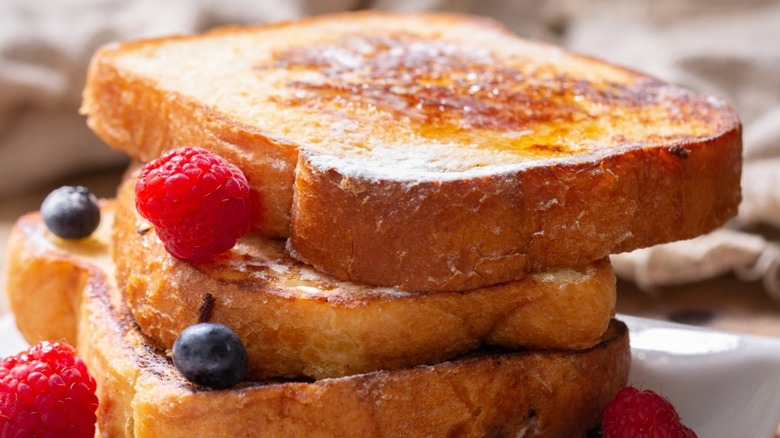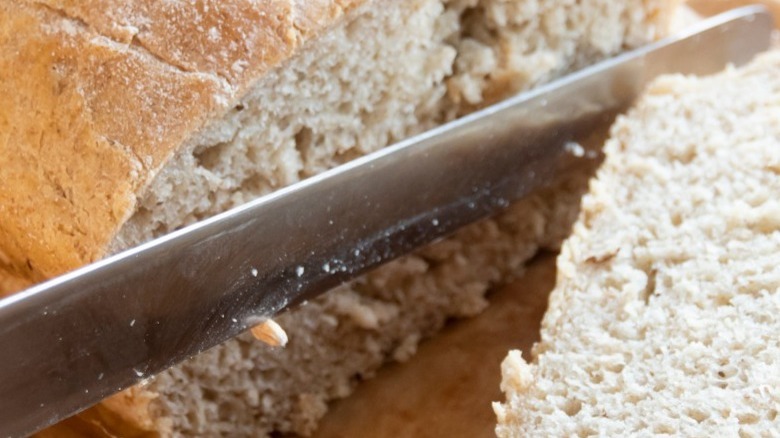Why The Size Of Your French Toast Slice Actually Matters
According to the BBC, eating breakfast can be beneficial for your health, so much so that the meal is "associated with improved brain function, including concentration and language." And out of all of the contenders for the best weekend-morning breakfast, French toast is in the front running as one of the most delectable ways to wake up.
The decadent dish has become such a staple that some fans have even found a way to turn it into French toast casserole. The fact so many people treasure this breakfast classic should come as no surprise given the truth of French toast's extensive history. It also helps that the recipe is composed of ingredients most people already have in their house.
But there is a way to make an already beloved favorite even better. If you're ready to add a new depth of previously untapped flavor to your French toast you only need to adjust one of its key ingredients. Could the dimensions of your bread ultimately be the make-or-break factor for your French toast?
The larger the French toast slice, the tastier
According to Real Simple, nothing compares to making French toast with big slices of bread. Larger slabs are good for more than just making you feel full and satisfied fast, they are also better for soaking up the French toast's glaze. Smaller slices, on the other hand, aren't able to hold as much of the custardy base, and you run the risk of the bread becoming oversaturated.
Before you prepare your French toast, be sure to grab a full loaf of unsliced bread at the store. By doing this, you will be able to control how large your French toast slices are. According to kitchn, you should aim for "at least a one-inch-thick slice, which helps keep the bread from becoming too soggy while promoting a nice, creamy interior." So the next time you're thinking through your breakfast recipe options and settle on French toast, remember to use sizable bread slices to start your day off on the right foot.

